Chapter 3 | WAVES
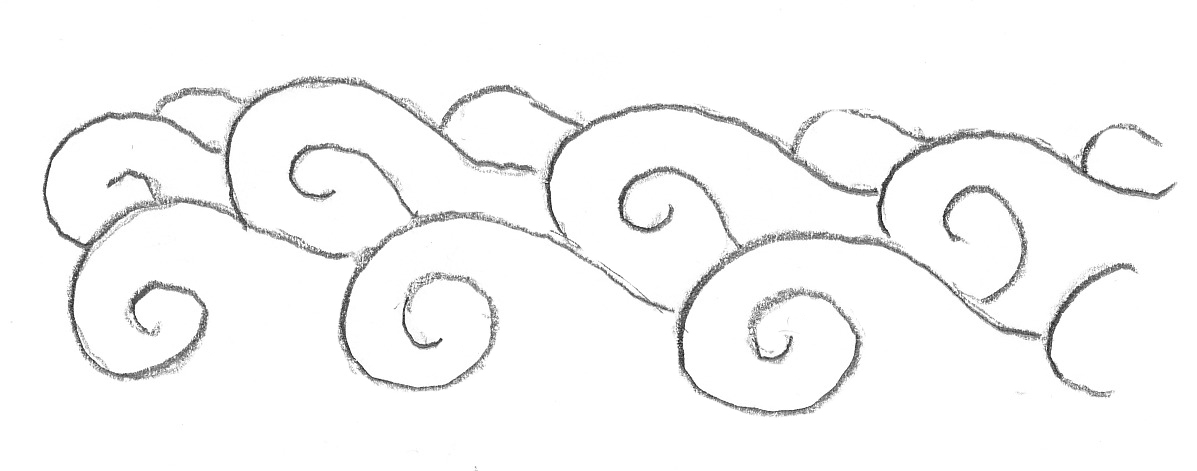
There are many ways to draw waves. A very old stylized way is the rolling waves as above.
Exercise 1: Draw a calm lake of sea. Make the lines for the waves further away smaller and smaller. The horizon line between the water and the sky should not be too tight.

Exercise 2: If the wind is blowing a bit harder, make the waves a bit higher, especially at the front, and give them a bit more different shapes. Add things if you like.
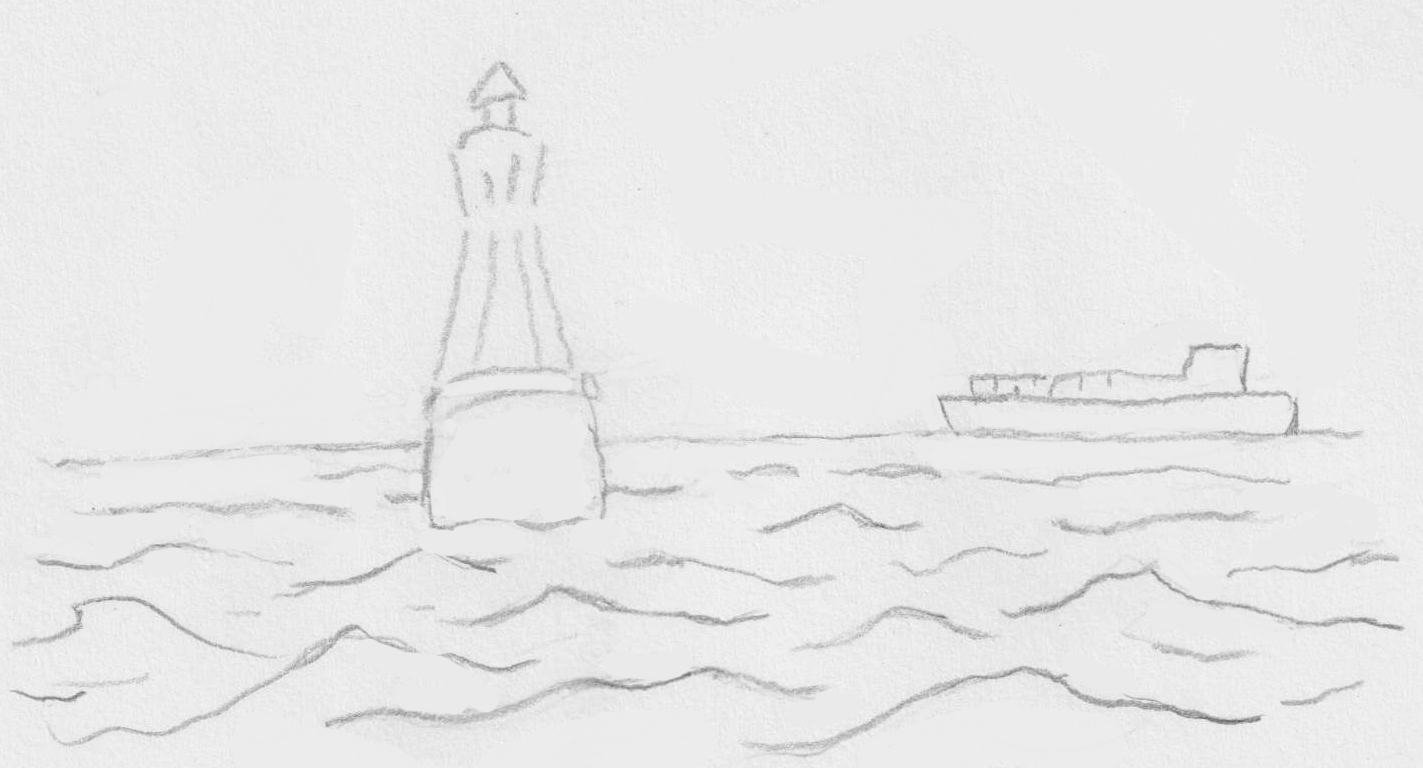
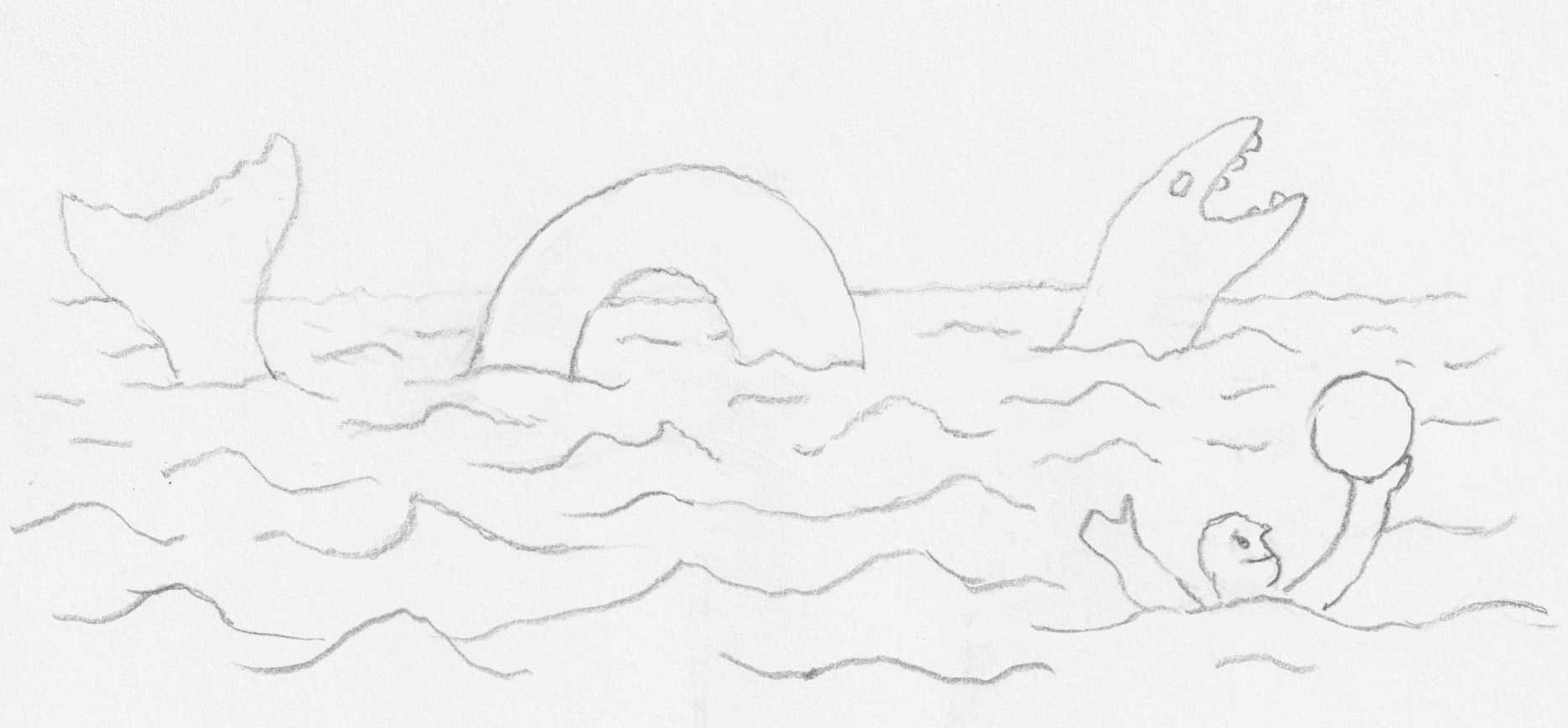
Exercise 3: During a storm, the seawater is pushed up and waves take on countless shapes. They are like liquid mountains. I’ll show you some loose examples to draw.
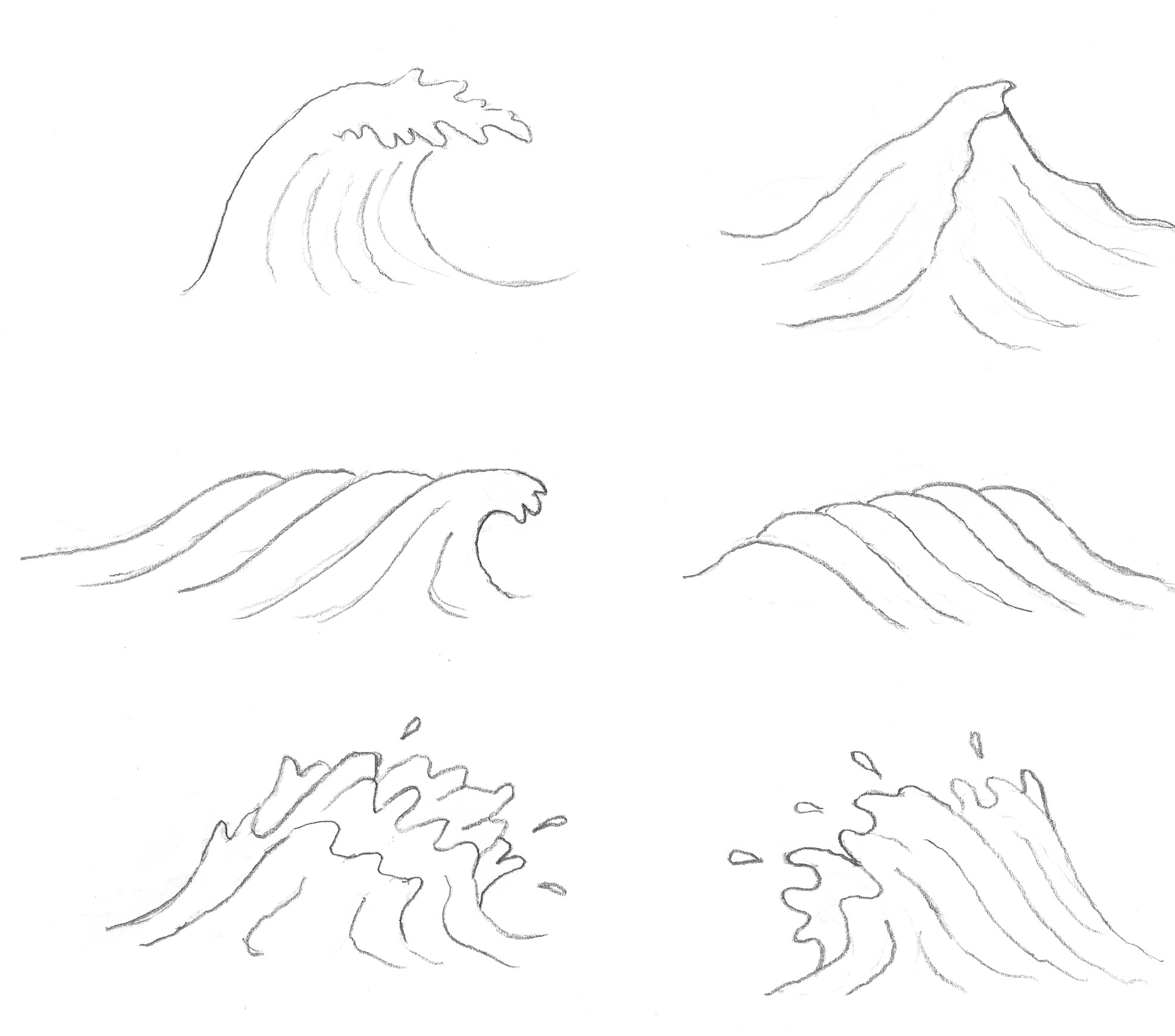
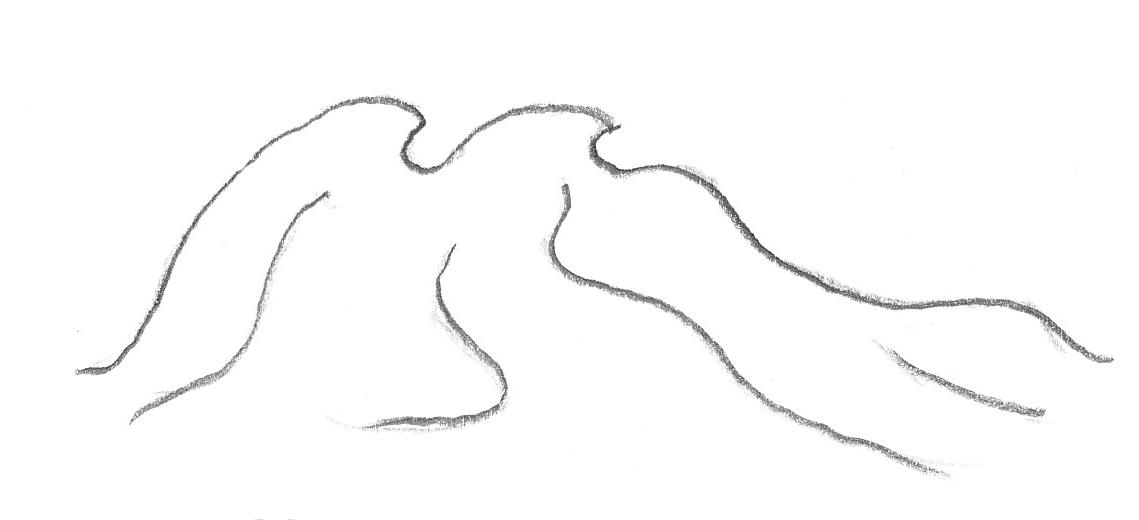
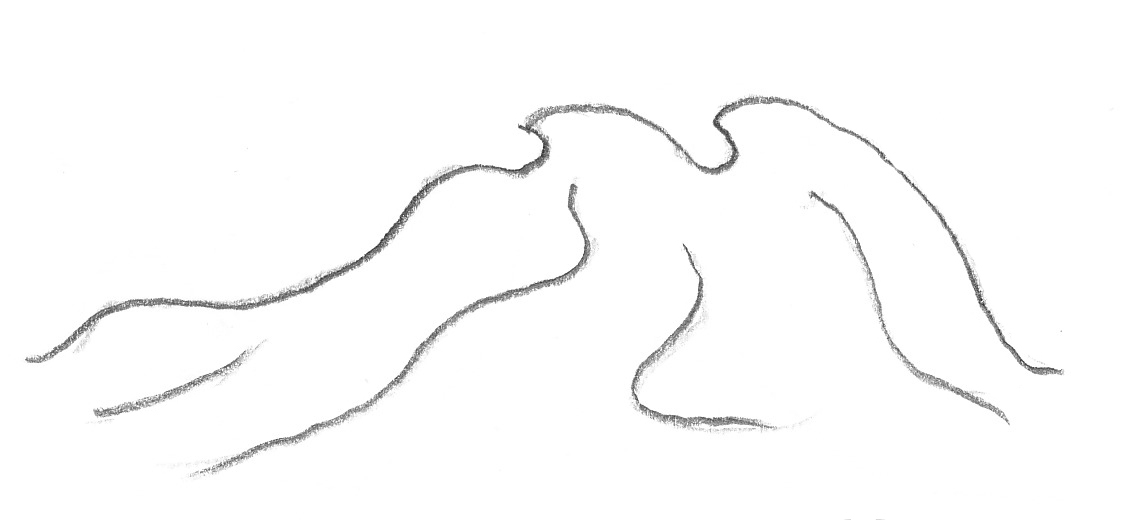
Exercise 4: Draw a few of these waves next to each other, in such a way that they partially overlap.
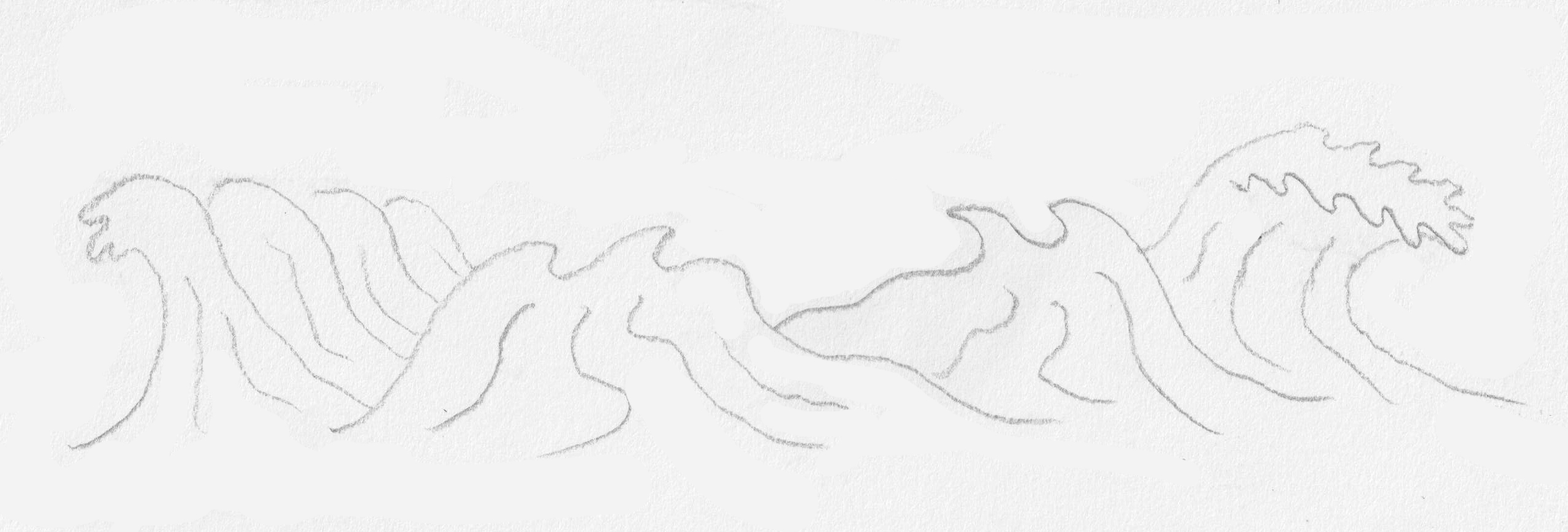
EXTRA 1: Imagine a wild sea with all kinds of high waves. Start at the bottom. Behind each wave you create a new wave, each time with different shapes. You can add a rocky coast, boats, birds and clouds, whatever you like.
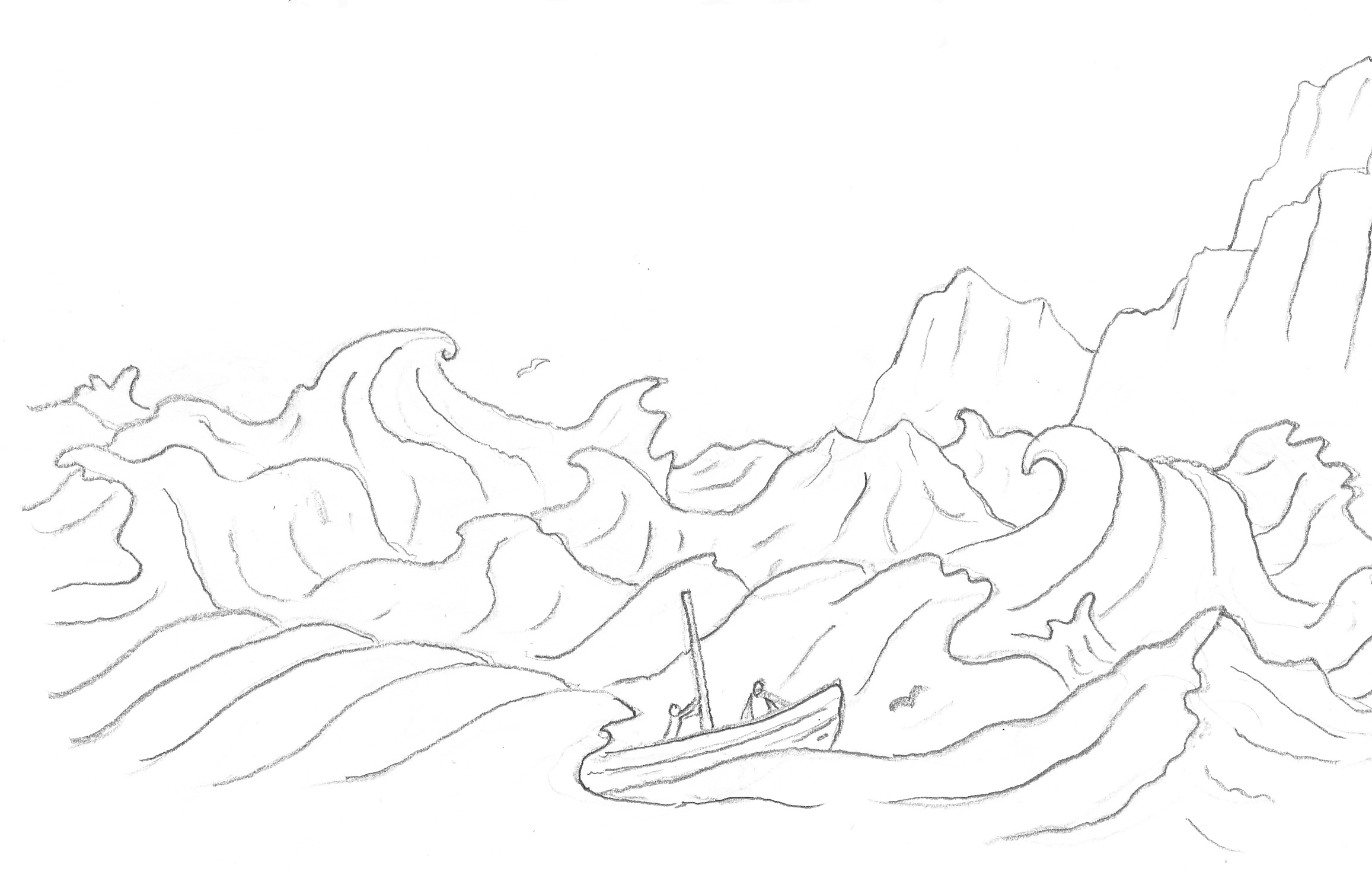
LIGHT AND SHADOW
Drawing waves with light and shadow instead of clear lines is (also for me) a challenge. Waves quickly appear solid rather than fluid and the glare of light on the water plays hard to get.
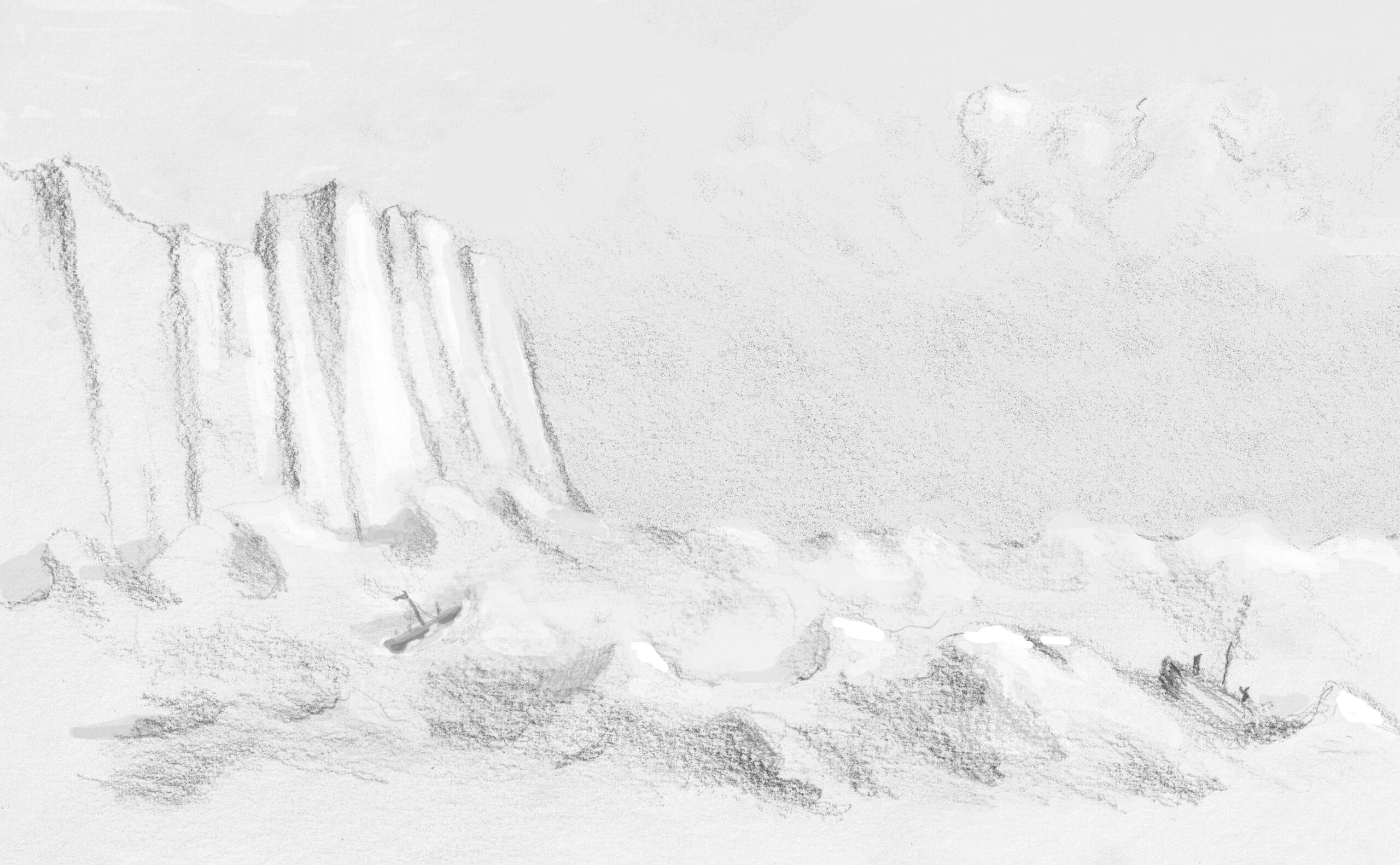
I therefore looked at sea paintings by masters (see chapter 4) and tried to draw the waves from one of the paintings. First I indicated the most important shapes very lightly.
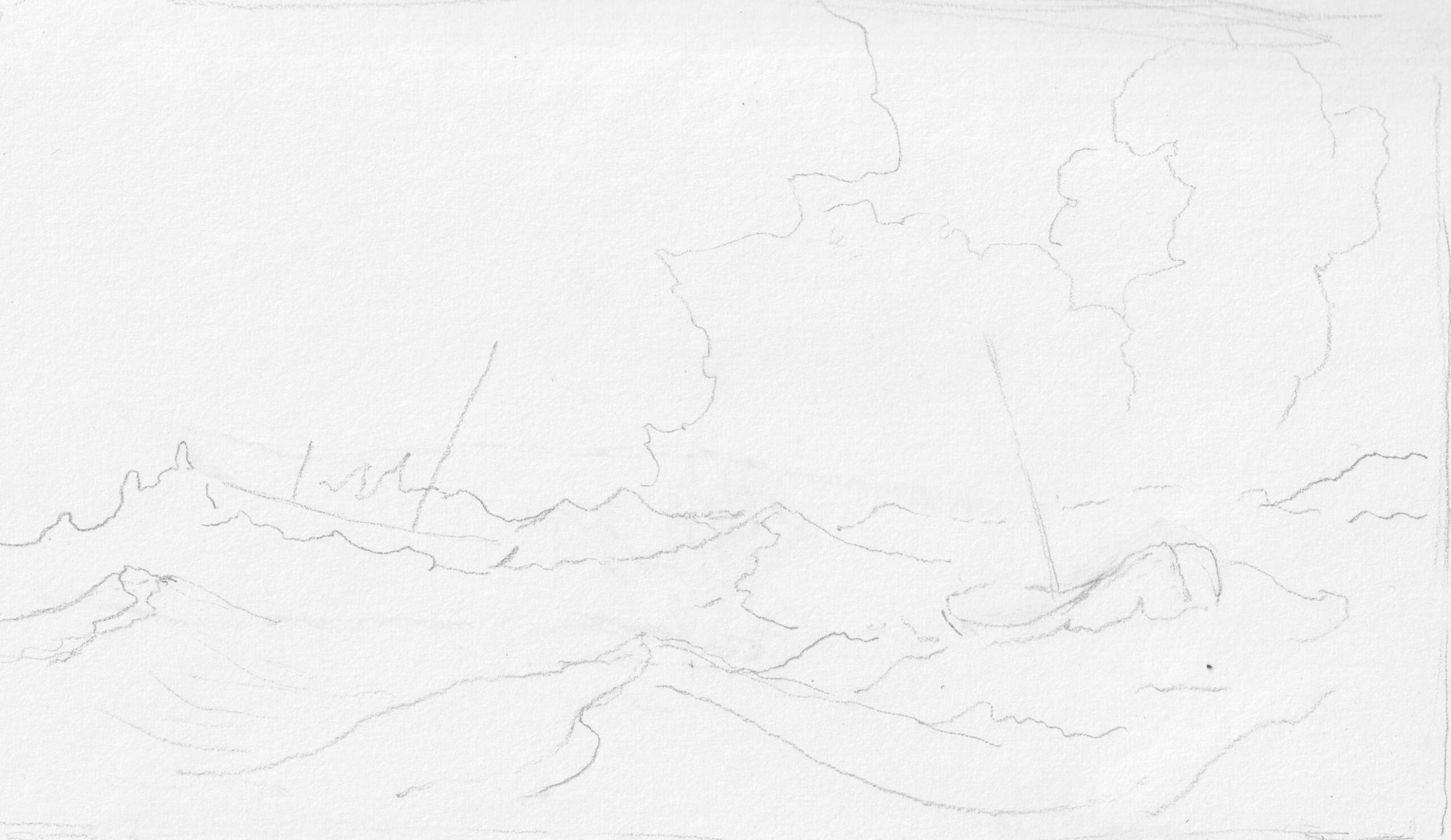
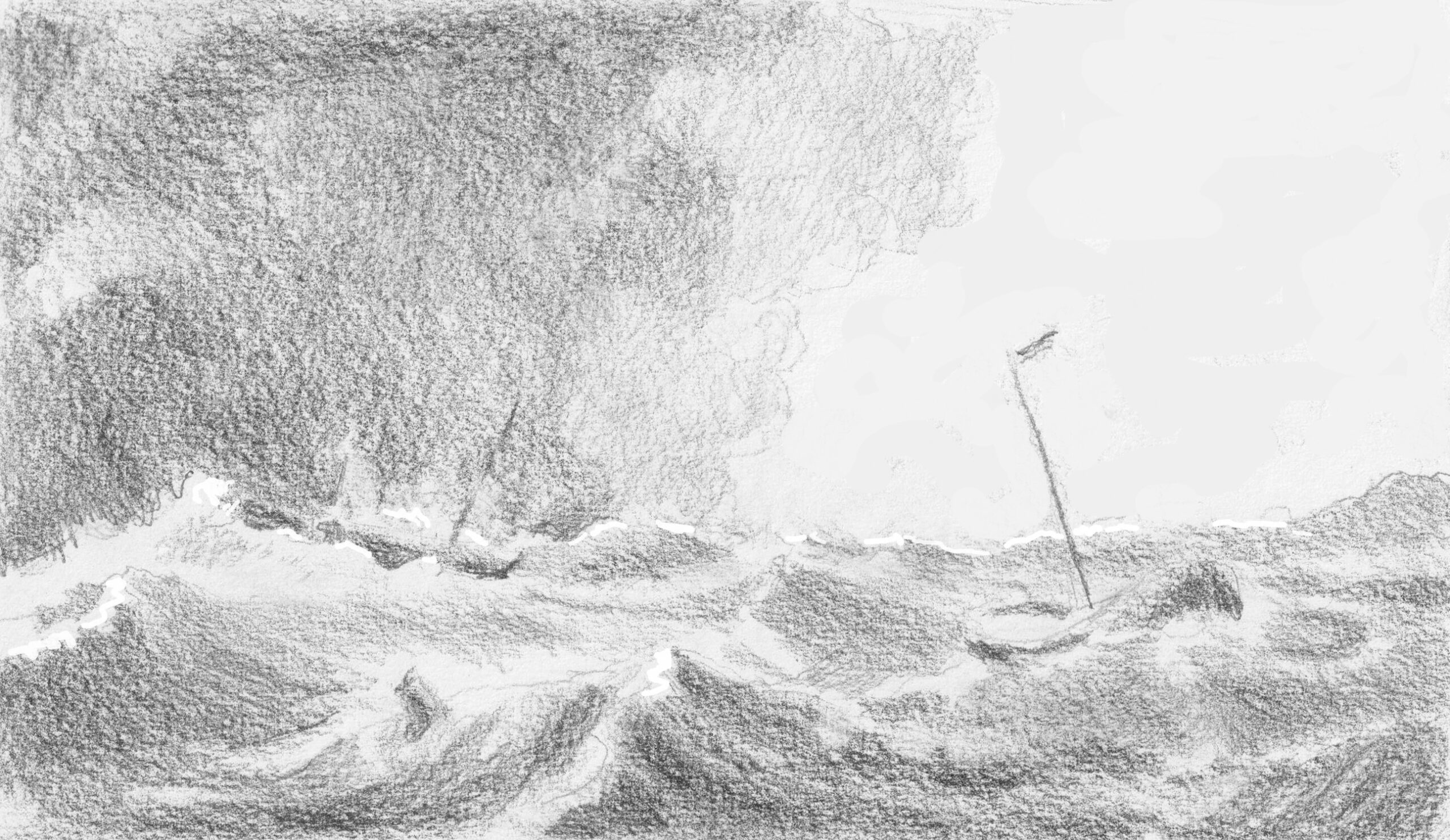
EXTRA: Draw a horizontal frame in 2:3 ratio, for example 10 x 15 cm. (standard photo size). Look through your eyelashes at the sea painting by the English painter William Turner and try to draw just the shadow areas with a soft pencil (2B or softer), without details! Build up the deepest dark quietly instead of immediately pressing hard with your pencil. Try not to make the transitions between the different shades of gray too tight. With a good eraser (or kneaded eraser), white pencil or digitally you can add ‘highlights’ (such as the sea foam just to the left of the front boat). At the end you can draw some details.
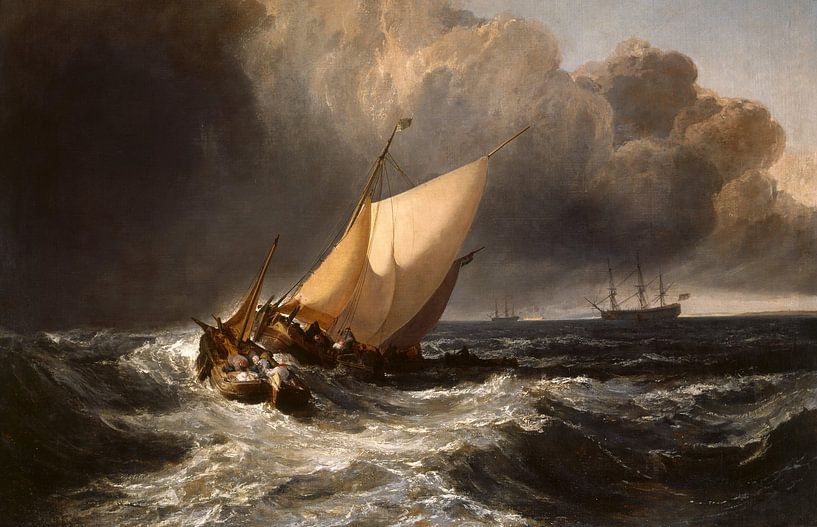
In the following example, a student (18 years old) has painted a remarkable sequence of a ship at sea: at the top a calm sea with nice weather. Beautiful how the boat really lies in the sea water with splashing foam. In the middle the transition to different weather. At the bottom the ship has been caught in a night storm and is barely visible. Look at the gray/blue-gray tones painted with broad gestures and the accurate light spots of the moonlight on the waves. This student has created an expressive impression of a night storm at sea with little to no details. Unfortunately I can no longer find the names of this and many other students.
